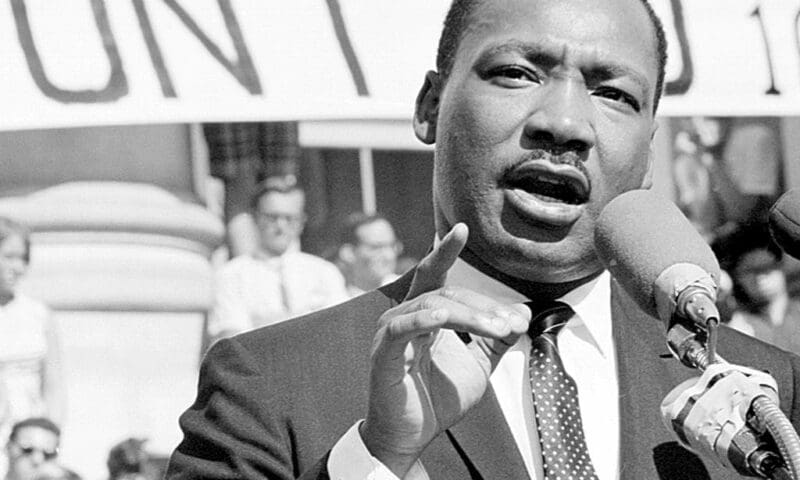
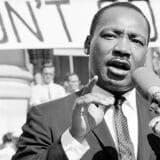
King went to Memphis, where he was killed, to support Black garbage workers, who were on strike to protest unsafe conditions, abusive white supervisors and low wages.

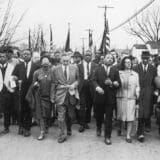
A lifelong advocate reflects on the philosophy that fueled the late congressman’s pursuit of justice.

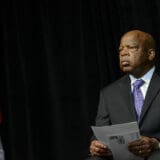
The civil rights movement’s leading disciple of nonviolent protest reflects on the life and work of the late congressman.
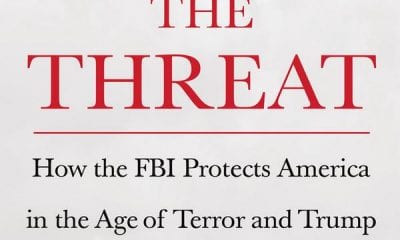
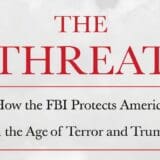
In our national effort to hold Trump accountable, it’s dangerous to accept at face value Andrew McCabe’s uncritical praise of the FBI without remaining alert to the bureau’s serious constitutional violations.
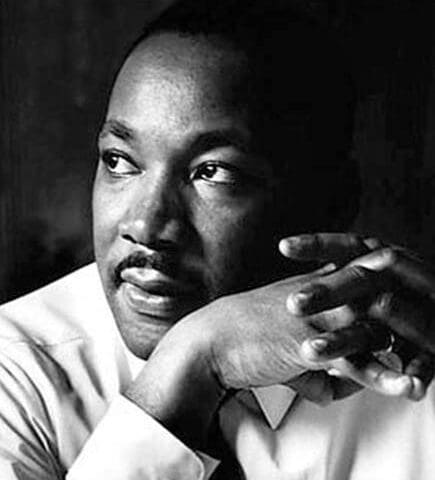
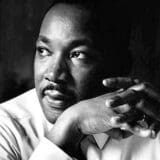
From a 1966 Chicago speech before the Medical Committee for Human Rights.
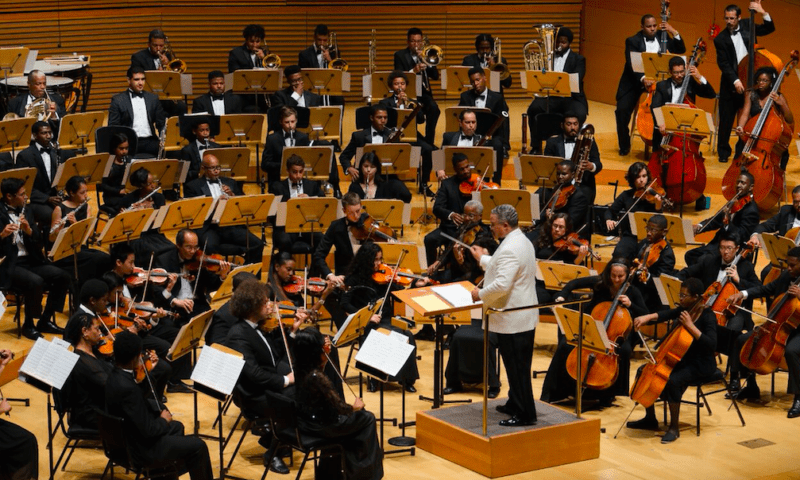
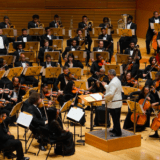
The Inner City Youth Orchestra of Los Angeles’ Wednesday concert reflects on M.L. King Jr.’s times, struggle and sacrifice, with the orchestra’s musical setting of King’s “I Have a Dream” speech.
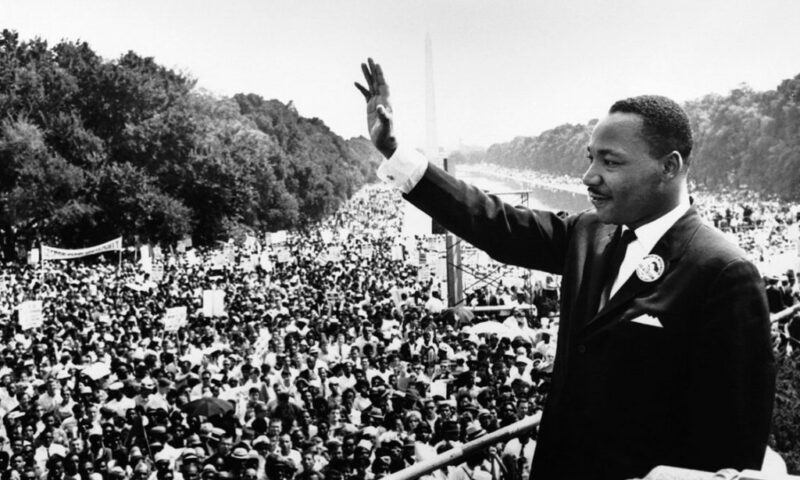
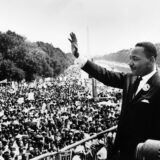
50 years after his death, Martin Luther King Jr.’s teaching on nonviolent direct action are as relevant as ever.


Ceremonies honoring the birth of Dr. Martin Luther King Jr. began over the past weekend and culminate today. Below are three California cities that will feature extensive events.


Most Americans today know that Reverend Martin Luther King Jr. was killed in Memphis, Tennessee in 1968, but few know why he was there. King went to Memphis to support African American garbage workers, who were on strike to protest unsafe conditions, abusive white supervisors, and low wages — and to gain recognition for their union.
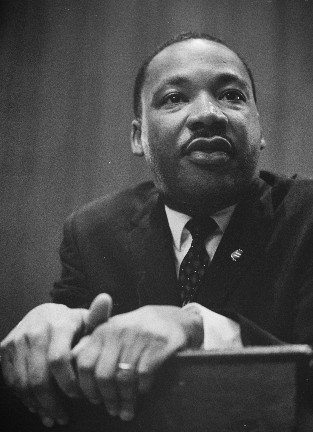
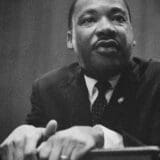
As we celebrate his birthday, it is easy to forget that Rev. Martin Luther King Jr. was a democratic socialist.
In 1964, accepting the Nobel Peace Prize in Oslo, he observed that the United States could learn much from Scandinavian “democratic socialism.” He often talked about the need to confront “class issues,” which he described as “the gulf between the haves and the have-nots.”
In 1966 King confided to his staff:
“You can’t talk about solving the economic problem of the Negro without talking about billions of dollars. You can’t talk about ending the slums without first saying profit must be taken out of slums. You’re really tampering and getting on dangerous ground because you are messing with folk then. You are messing with captains of industry. Now this means that we are treading in difficult water, because it really means that we are saying that something is wrong with capitalism.
» Read more about: Martin Luther King Jr. on the Haves and Have-nots »
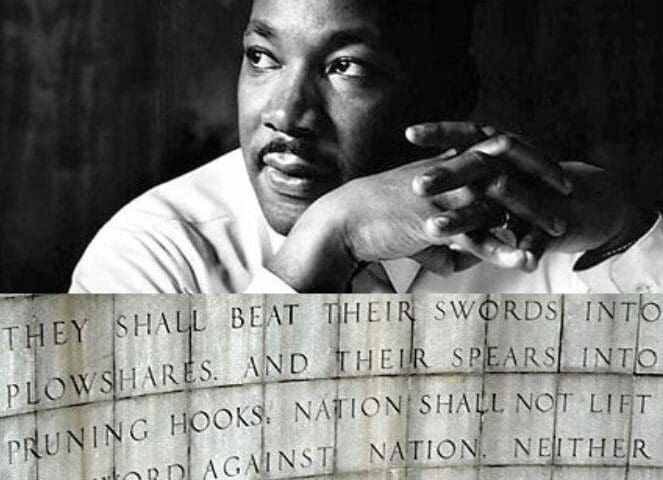
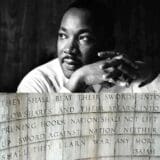
As this country hurtles into a New Year, I am grateful for the stop sign at Martin Luther King Jr.’s national holiday. It offers time for me to consider again the meaning of my life as well as to our national purpose. This year I am remembering that King’s life focused not only on civil rights, but also jobs. His vision of justice went beyond voting and equality to decent work for livable pay. That’s why he went to Memphis – to support striking garbage workers.
I am old enough to remember the early days of the peace conversion movement in the 1970s. Following the end of the war in Vietnam many people thought that the savings no longer needed for the military in that misadventure could be turned into social investments such as hospitals, schools and such, bringing good jobs with them. Again, at the end of the Cold War,
» Read more about: Peace and Jobs: A Conversion Conversation »

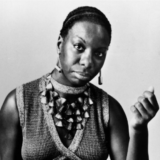
The first shot of What Happened, Miss Simone? shows a crowd applauding the appearance of a singer. After years of a self-imposed hiatus, Nina Simone walks onstage, and with one hand on a piano, bows. For a full 10 seconds. She then looks up and out at the rapturous audience. But she is not smiling. Her stare is intense. Some will see fear in her eyes. Others will see indifference. Others might even see loathing. Or all of it.
Once Simone sits at the piano and the applause ends, she does nothing for half a minute. The uncomfortable silence is finally broken by her softy saying “Hello” into the mic, only to be greeted by a fan shouting, “Hi. We are ready!” But is Simone? After seeing Liz Garbus’ documentary, an even better question is, “Was she ever?”
Unlike our modern commodified stars, Nina Simone’s life was a messy journey of discovery. » Read more about: Film Review: ‘What Happened, Miss Simone?’ »
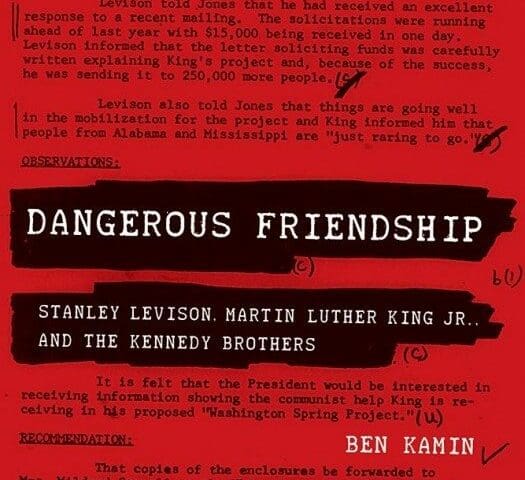
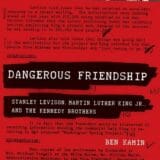
FBI Director J. Edgar Hoover tried to erase the name of Stanley Levison from civil rights history in the 1960s. Now historian Ben Kamin is putting Levison firmly back into the historic record with his new book, Dangerous Friendship: Stanley Levison, Martin Luther King, Jr., and the Kennedy Brothers.
Levison was a successful Jewish businessman and member of the American Communist Party until 1956, when the Soviet invasion of Hungary left him disillusioned. He refocused his organizing skills, business and labor contacts, energy and intelligence to support the work of Martin Luther King Jr., helping to found, manage and fund King’s organization, the Southern Christian Leadership Conference. In the process, Levison became an intimate friend of King and part of the tight circle of confidants who helped develop King’s campaigns and sustain him emotionally.
What drew Levison, and hundreds of other American Jews like me,
» Read more about: Book Review: MLK’s Dangerous Friendship »
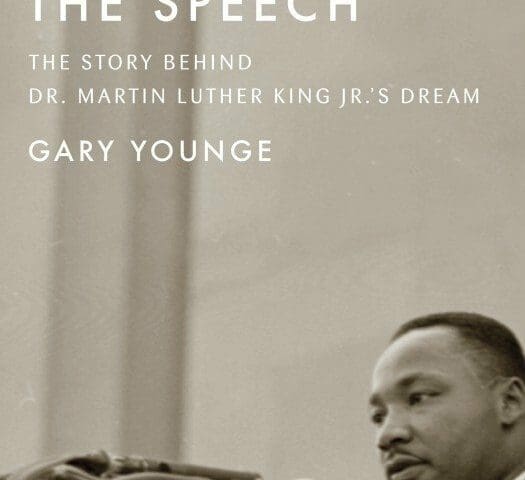
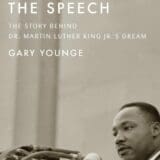
August 28th marked the 51st anniversary of the historic March on Washington for Jobs and Freedom. On that sweltering day in 1963, amidst an atmosphere of racial tension stoked by political indecisiveness, as well as acts of violent Southern resistance defined by bombings and bloody protests, 250,000 Americans converged on the National Mall. There, facing the Lincoln Memorial, educators, clergymen, entertainers, civil rights leaders, politicians and ordinary citizens listened to a day of speeches, prayers and song. They had gathered so that their voices could be heard throughout the nation, but one voice on that day would be heard above all others.
Dr. Martin Luther King Jr. was the last speaker when he delivered his “I Have a Dream” speech. That historic oration is the subject of The Speech: The Story Behind Dr. Martin Luther King Jr.’s Dream, by Chicago-based journalist Gary Younge. Its four chapters brim with key insights and revelations about those troubled times,
» Read more about: Gary Younge on MLK’s Most Famous Speech »
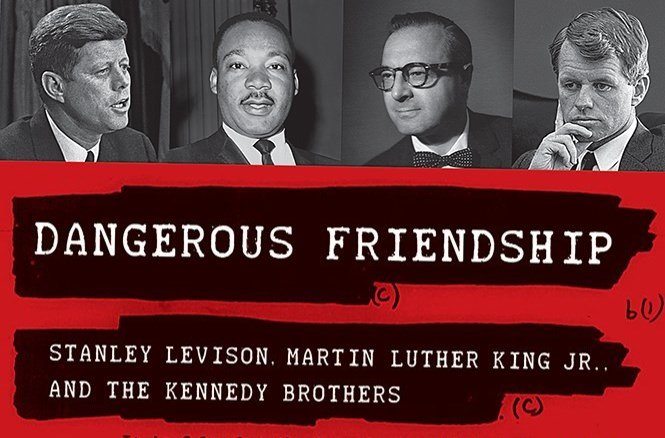
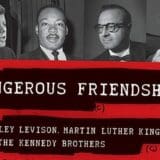
Most students of the 1960s may know about the FBI’s obsessive surveillance of Martin Luther King Jr. and how the bureau’s shadowing and bugging of the Southern Christian Leadership Conference’s president would lead federal agents to infiltrate the civil rights and peace movements. Now, a new book by Ben Kamin throws a spotlight on the man whose close friendship and collaboration with King provoked J. Edgar Hoover’s wrath and paranoia. Dangerous Friendship analyzes the relationship between King and Stanley Levison, a lawyer and wealthy businessman with a radical past. The book tells how Levison, known as King’s ghostwriter and closest white friend, advised King on strategy and raised righteous amounts of money for his cause; the story also shows how their friendship prompted the Kennedy White House to force King to shun Levison for more than a year.
Kamin, a nationally known rabbi, also explores how Levison’s personal solidarity with African American struggles reflected a traditional Jewish embrace of equality and social activism.
» Read more about: Tonight: Ben Kamin on MLK’s “Dangerous Friendship” »


Most Americans today know that Reverend Martin Luther King Jr. was killed 46 years ago in Memphis, Tennessee. But fewer know why he was there.
King went to Memphis to support African American garbage workers, who were on strike to protest unsafe conditions, abusive white supervisors, and low wages — and to gain recognition for their union. Their picket signs relayed a simple but profound message: “I Am A Man.”
If he were still alive, King would surely join the growing campaigns to unionize and improve pay and working conditions for janitors, security guards, hotel workers, hospital employees, farmworkers, grocery employees, and others who earn poverty-level wages. He might disrupt Walmart stockholder meetings to demand that the company pay employees a living wage, join fast-food workers in their quest for decent pay, and urge consumers to boycott the Gap, Walmart and other companies until they stop manufacturing their products in overseas sweatshops.
» Read more about: MLK’s Last Campaign Was for Workers’ Rights »
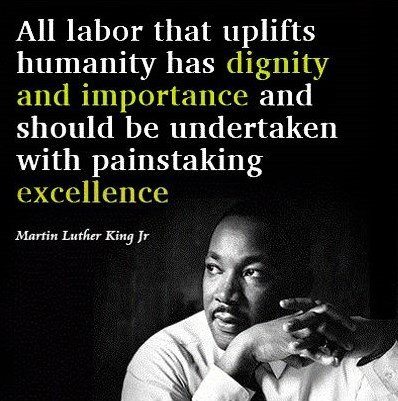
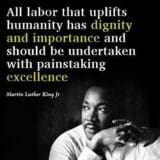
Last year, as we remembered the life and legacy of Reverend Dr. Martin Luther King, Jr., we focused much of our attention on the 50th anniversary of the March on Washington for Jobs and Freedom. We reflected on the historical words that followed, “I have a dream” and reaffirmed our commitment to keeping the dream alive.
We measured our progress through victories such as the end of Jim Crow segregation, the passage of the Civil Rights and Voting Rights Acts, and the election of our first African American President. We also talked about where we need to devote our efforts for the dream to become a reality.
With that, one year later we are reminded of the inequalities that still exist and the call to action we must all answer:
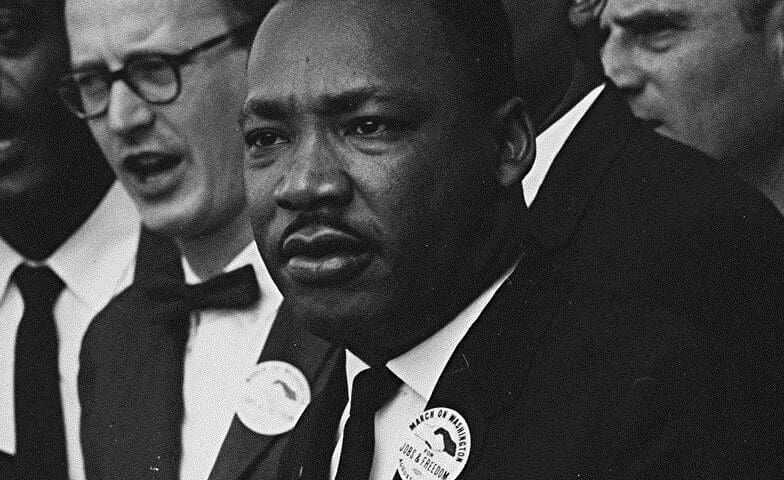
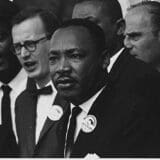
“I’m not in despair, because I know that there is a moral order. I haven’t lost faith, because the arc of the moral universe is long, but it bends toward justice.”


Out of 300 million Americans, a few thousand wield disproportionate economic and political influence because of their positions at the pinnacle of America’s corporate and media establishments or their roles as political allies (or puppets) of the corporate ruling class. C. Wright Mills described this group in his 1956 book, The Power Elite; G. William Domhoff has updated this analysis in his book, Who Rules America? (now in its seventh edition), and Jacob Hacker and Paul Pierson have described how the power elite wields its influence in Winner-Take-All Politics.
Many of them have overlapping memberships on the boards of the largest corporations, business lobby groups, universities and think tanks, foundations and media conglomerates. They are not part of a conspiracy. They do not meet secretly to plot America’s future. And they do disagree with each other on some issues,
» Read more about: Dinner for 20 Schmucks: An Elite Hall of Shame »


Fifty years ago, just a year out of high school, I sat in my parents’ small living room engrossed by images on the flickering black and white TV screen. Something called the March on Washington was running live — the whole event, as I recall, which network television did in those days. I’m not sure why I was not at work or why I was alone in the house, but I remember that tears came to my eyes, just as they do now as I think back on that day.
My parents were originally from the South, but both grew up in Southern California. My mother had been born in Mississippi, moved to Texas and then Inglewood. My father came from Texas to La Crescenta. After they married and my father became a minister, Northern California was home, but the ethos of white superiority and other ethnic and class inferiorities were engrained.